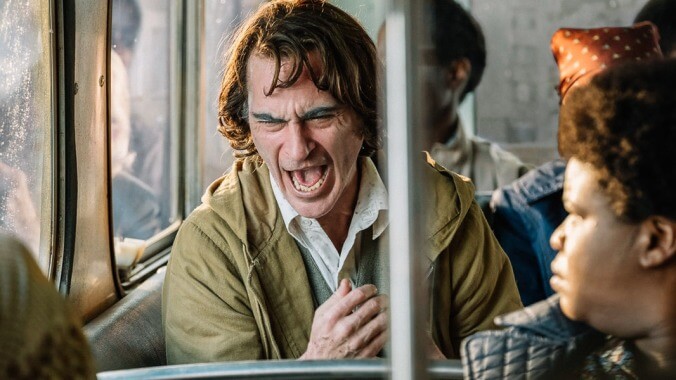Joker’s throwback vision is derivative, but at least it brings something new to superhero cinema

Joker (Grade: B-), an operatic and fashionably nihilistic smear of comic-book mythmaking that already feels like a phenomenon a whole month before it’s even scheduled to open, is a movie that could only exist right now, at this exact moment in pop culture history. There is, for one, a certain exploitative topicality to the film, to the way it tries to hold up a mirror, cracked like the one Jack Nicholson shattered during his own tenure in the clown makeup, to a scary and rampant American dementia—that mixture of rage and disillusionment that’s scrawled across so much headline horror in 2019. (That may be part of the reason Lucrecia Martel and her fellow Venice jurors rather shockingly handed it the Golden Lion a few days ago.) But to say that this is a wholly contemporary blockbuster is also to acknowledge that there’s almost no way it would have secured a green-light any time before right now. More so even than Logan or Deadpool, it’s an unlikely outgrowth of our current age of superhero saturation: an R-rated, character-driven origin story without CGI or action scenes, built entirely around madness and despair.
In caped-crusader terms, Joker plays like an Elseworlds one-off, inserting maybe the most famous antagonist in all of comics into a throwback New Hollywood-biting psychodrama. For all its grimy flavor, the Gotham the movie presents is every bit as imaginary as Tim Burton’s; whereas the 1989 Batman city-planned from a blueprint of German silent classics, the latest version of the grand, imaginary place is a distorted reflection of 1970s New York as seen on screen during that era. Within this movie-buff flashback metropolis, Arthur (Joaquin Phoenix) loses his already loose grip on reality and sanity. Arthur, who looks after his ailing mother in a run-down rat-nest apartment—just as Phoenix’s character in You Were Never Really Here did—makes ends meet as a rent-a-clown, but really wants to be a stand-up comedian. Unfortunately, he’s blatantly unwell, and responds to any emotional distress the same way: with hysterical, uncontrollable laughing, his “condition.”









![HBO teases new Euphoria, Larry David, and much more in 2026 sizzle reel [Updated]](https://img.pastemagazine.com/wp-content/avuploads/2025/12/12100344/MixCollage-12-Dec-2025-09-56-AM-9137.jpg)






























